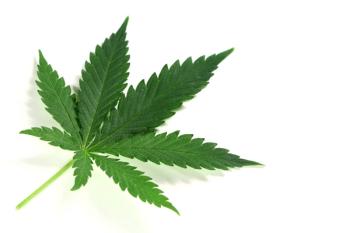
Cannabis Science and Technology
- May 2020
- Volume 3
- Issue 4
Could Automation Be the Next Big Boon to Cannabis Production?
A closer look at the advent of robotics and technology and how it is benefitting many industries and market segments-including cannabis production.
The advent of robotics and technology is benefitting many industries and market segments-including cannabis production. With the rise of cannabis production and its demand, production efficiency will gain importance. Robots are widely used in most production environments. For the cannabis industry, robots and other automation systems serve to lower costs, increase production, and build profitability early in the emergence of cannabis growth, harvest, and the logistics of delivering product to market.
In Ontario, Canada, test and experimentation is underway to cultivate cannabis-not only with human beings-but with robots. Such demonstration of the utility of robots and automation for cannabis, may be a longer-term harbinger of things to come in the cultivation of cannabis.
The wide terrain of agriculture lends itself not only to robotics, but to other facets of automation. Drones are widely used in agriculture. Robots are gaining ground quickly as they allow growers and harvesters to perform work that would otherwise be performed by human beings. But what about cannabis production?
The cannabis industry may be an early adopter, but expect to see more automation systems being used as the cannabis footprint takes hold in the commerce of the US and the world.
Specifically, for the cannabis industry, robots and other automation systems serve to lower costs, increase production, and build profitability early in the emergence of cannabis growth, harvest, and the logistics of delivering product to market.
“We have already seen how dramatically it can improve processes in extraction,” says Andy Rodosevich, CEO of Hemp Depot based in Colorado Springs, Colorado. “Three years ago, to go from raw hemp material to CBD oil in a bottle was an entirely manual process. Thanks to automation advancements, this process is now near entirely turnkey, saving hundreds of labor hours and resulting in a more consistent product. The more automation can streamline processes as it has for extraction, the more competitive cannabis pricing will become.”
Consistency and Efficiency
Automation will enable growers to scale as demand increases in the future. As growers advance, they’ll be able to allocate more capital to automation and boost their capability and efficiency. This will also help small growers as they are able to automate, to keep pace with larger growers, and compete. It’s likely that more growers will consolidate, and through acquisition may be better positioned in the future to employ economies of scale and push production costs lower.
Specifically, automation enables growers to displace laborious tasks such as irrigation and fertilization-otherwise accomplished manually. It will allow employees typically burdened with such work, to focus their efforts elsewhere in the production chain and allow the grower to be more productive and efficient. Automation is more likely to displace jobs, than replace them.
Ryan Douglas, the founder of Ryan Douglas Cultivation LLC, a cannabis consulting firm, explains that we can expect to see automation incorporated into labor-intensive daily activities such as fertilizer preparation, irrigation, and pesticide applications. He also thinks that less frequent, but still time-consuming tasks such as soil mixing, pot filling, and plant transportation can be automated to help decrease labor costs and increase precision.
Automation will be the cannabis grower’s best option for remaining competitive and profitable in an industry that is sure to face price compression in the future, Douglas added.
“Once a cannabis operation reaches one acre in size, the business should consider automating,” said Douglas. “Facilities smaller than one acre can exist successfully as a manual operation, but employees will spend a lot of time hand watering, opening and closing vents, and moving plants. For operations larger than one acre, it will be absolutely necessary to automate the cultivation process to remain profitable on a commercial scale.”
Early Adoption: Short-Term and Long-Term Benefits
For cannabis producers, technology adoption is still early. But automation-related technology should help them make great gains in their productivity. We should expect to see such gains in the short-term, as it helps with immediate concerns such as pests, insect, and fungus control. And we can also expect to see automation aid growers in using specific fertilizers and agents to help control such problems.
An Achilles heel to the cannabis grower is combatting the menace of insects and the detrimental effects of fungicide and other agricultural disease. With more automation, crop treatment may be administered promptly and at scale. This, subsequently, should aid the overall quality of a crop with a fixed allocation of labor. Early adoption of automation will allow most growers-both large and small-to benefit from a better crop early on, helping them establish themselves as growers, and remaining in a strong position as the market demand for cannabis continues to mature. Early adoption of automation helps them get there faster, bringing benefit in the short-term and the long-term.
The Road Ahead
Cannabis cultivation is new and emergent. It is a new, exciting, and dynamic sector of the agricultural economy. It is driven by many smaller farms seeking to grow their businesses and harvests. As they overcome challenges, and learn productivity tactics, automation is expected to help. In a sense, it helps streamline growing that ordinarily takes a lifetime of learning lessons to perfect.
Rodosevich explained that we have been perfecting corn farming and harvesting for hundreds of years. We have highly automated farming equipment that can run entirely unmanned. But for hemp farming much automated equipment is in development, or yet to be developed.
In Canada, the Cannabis Act of 2018 created an austere legal framework for controlling the production, distribution, sale, and possession of cannabis across Canada. Consultant PwC of Canada, aptly states the future of Canadian cannabis production (1): “Where there is opportunity there is also uncertainty. Disruption in the sector is a question of when, not if, as existing companies grow, large adjacent players may enter, and the regulatory environment continues to evolve. If you are a cannabis company, an investor or potential investor, you know there are considerable issues and challenges rapidly approaching.”
The same holds true for US growers, and automation is a tool expected to help meet such challenges and issues in the months and years to come. Let’s hope that automation is a tool that will help them prosper and help a new and lucrative industry take shape.
References:
About the Author
Jim Romeo is a contributing writer focused on business and technology topics. He covers robotics, automation, and all things tech. Direct correspondence to:
How to Cite this Article
J. Romeo, Cannabis Science and Technology3(4), 42–43 (2020).
Articles in this issue
over 5 years ago
Best Practices for Pesticide Use in Your Cultivation Facilityover 5 years ago
New Extraction Technologies Lining Up to Be Game-Changersover 5 years ago
Potency Loss in Cannabis Beverages-Common Causes and Solutionsover 5 years ago
Azulenes: A Clear Sign of Cannabis Oil Contaminationover 5 years ago
CBD and Horses: Paving the Path for Future ResearchNewsletter
Unlock the latest breakthroughs in cannabis science—subscribe now to get expert insights, research, and industry updates delivered to your inbox.




